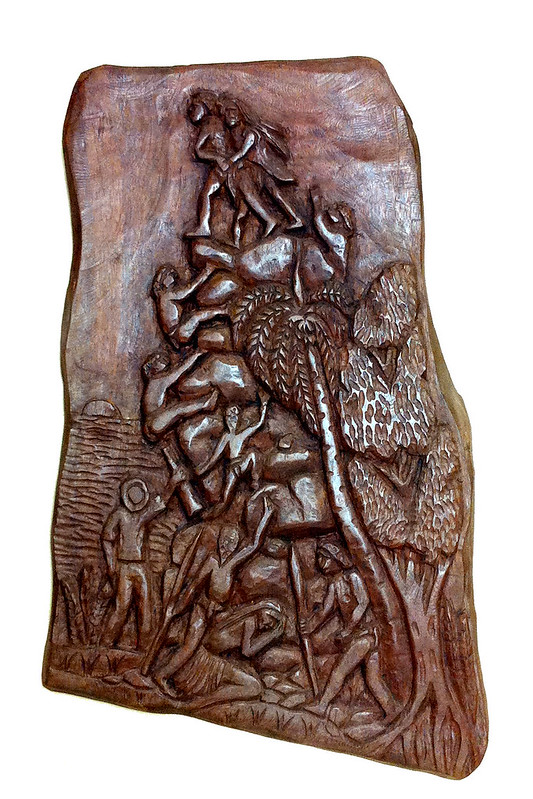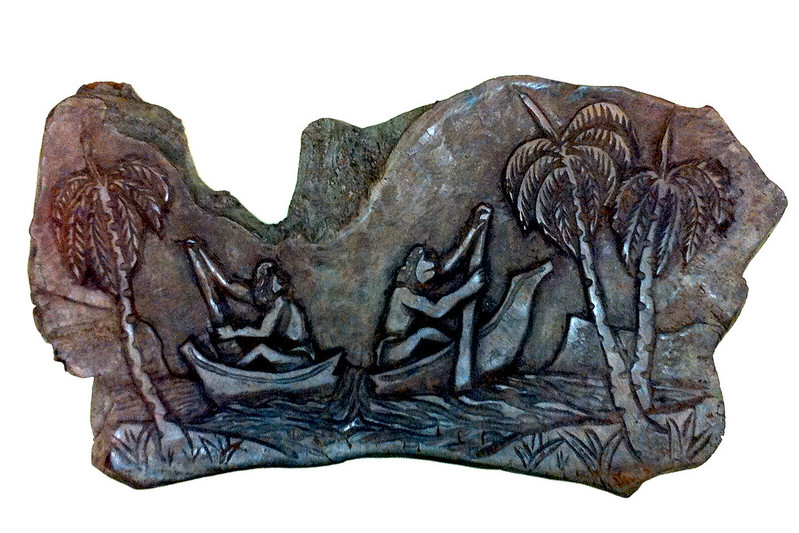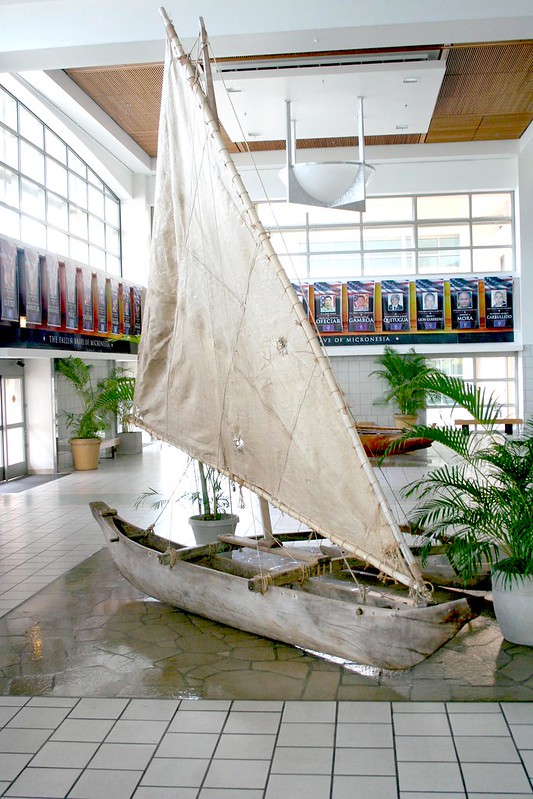Lifetime woodcarver
Segundo Blas (1917 – 2004) was one of the most respected and well-known traditional woodcarvers to emerge from the Mariana Islands in the 20th century. His skill in crafting canoe models, storyboards and other three-dimensional pieces, especially from ifil hardwood (Intsia bijuga), won him awards and recognition as a master artisan and woodcarver.
Blas was the youngest of four children. His parents were Juan Borja Blas of Hagåtña and Juana de Leon Guererro Duenas of Hågat. The couple moved to the northern island of Saipan shortly after they were married. Blas began carving as a child, learning the craft from his father who taught him to create various figures from pieces of wood. Recalling his youth, Blas remembered carving his wooden pencils into different shapes, and believed that woodcarving would be his life-long passion. Over the years, he carved model and full-scale canoes, karabao (water buffalo), carts and other figures. He even produced storyboards similar to those famous in the Palau islands, but with traditional CHamoru themes and legends.
While Blas was growing up, Saipan and the other Northern Mariana Islands were territories of Japan. His talent at carving was apparent early on, and the young Blas was encouraged to pursue extensive training in various traditional crafts, especially carving. Eventually, he worked his way up to the position of supervisor of the government handicrafts industry in Saipan. Blas subsequently was sent to Palau to study local crafts and canoe-building methods. Learning from his Palauan counterparts, the instruction helped him develop his talent at CHamoru storyboard carving, as well as to become a skilled carver of ifil wood. He continued working in the government crafts shop until the outbreak of World War II in 1941.
By the war’s end in 1945, Blas remained in the concentration camp the American military set up for CHamoru natives for over a year. Once again recognized for his exceptional skills, an American officer encouraged him to devote his time to carving. In spite of the fact that other CHamoru men were required to perform manual labor, Blas continued carving and made a living by selling some of his pieces. After the concentration camps were shut down and the residents allowed to rebuild their lives, Blas continued selling his woodcarvings in a shop operated by the US Navy until the shop closed several years later. Blas then began to teach his craft to children, passing on his skill to the next generation.
In 1963, Blas moved back to Guam and worked for a local construction company for seven years; later, he worked for the Department of Agriculture. During this time, however, Blas, continued woodcarving and found other opportunities to share his talents.
One of his most important commissions was in 1976, when Blas was asked by then-Governor of Guam Ricardo Bordallo to carve a full-sized CHamoru canoe in commemoration of the American Bicentennial. Working with fellow master carver, Tun Emilio Borja, the men constructed a 38-foot outrigger canoe, which took six months to complete. The vessel was put to sea as part of the celebration.
In the mid-1980s, Blas was approached by Rob Limtiaco, a young CHamoru with an interest in learning more about traditional CHamoru canoe-building methods. Blas agreed to train Limtiaco, along with Gary Guerrero, another young CHamoru interested in learning from the master. With funding from the National Endowment for the Arts (NEA) and the Guam Council on the Arts and Humanities Agency (CAHA) the men built a 15-foot outrigger canoe.
Limtiaco photographed and documented the process in an effort to share his experience of working with Blas with other young people. The vessel was sailed several times in the waters surrounding Guam before finally being placed on display at the Guam Museum.
Blas’ passion for woodcarving developed into a unique carving style, especially apparent in his depictions of CHamoru themes in his storyboards and three-dimensional pieces. Also apparent was his careful attention to detail, from his karabao and cart models, complete with passengers, cargo and tools, to his scale model canoes outfitted with sailors, paddles and woven pandanus sails. A true master, Blas represented Guam in the 4th, 5th and 6th Festival of Pacific Arts held respectively in Tahiti, Australia and the Cook Islands. He also exhibited pieces at the CHamoru Cultural Fair in California. Indeed, Blas’ work became well-known throughout the Pacific region.
For his efforts, talents and dedication to preserving CHamoru culture, Blas was the recipient of numerous local and regional awards including the 1997 Maga’lahi Award for Lifetime Cultural Achievement in perpetuating the art of traditional wood carving techniques. He was also included in the Hale-ta I Manfayi Who’s Who in Chamorro History series.
Tun Segundo Blas was married to the former Dolores Toves. He died in 2004.
For further reading
A Journey with the Masters of Chamorro Tradition. Hagåtña: Guam Council on the Arts and Humanities Agency, 2000.
I Manfayi: Who’s Who in Chamorro History. VoI. 3. The Hale’-ta Series. Hagåtña: Department of Chamorro Affairs, Division of Research, Publication, and Training, 2002.
“Picturing Guam Teachers Resource Book.” Humanities Guåhan, 2011.




















